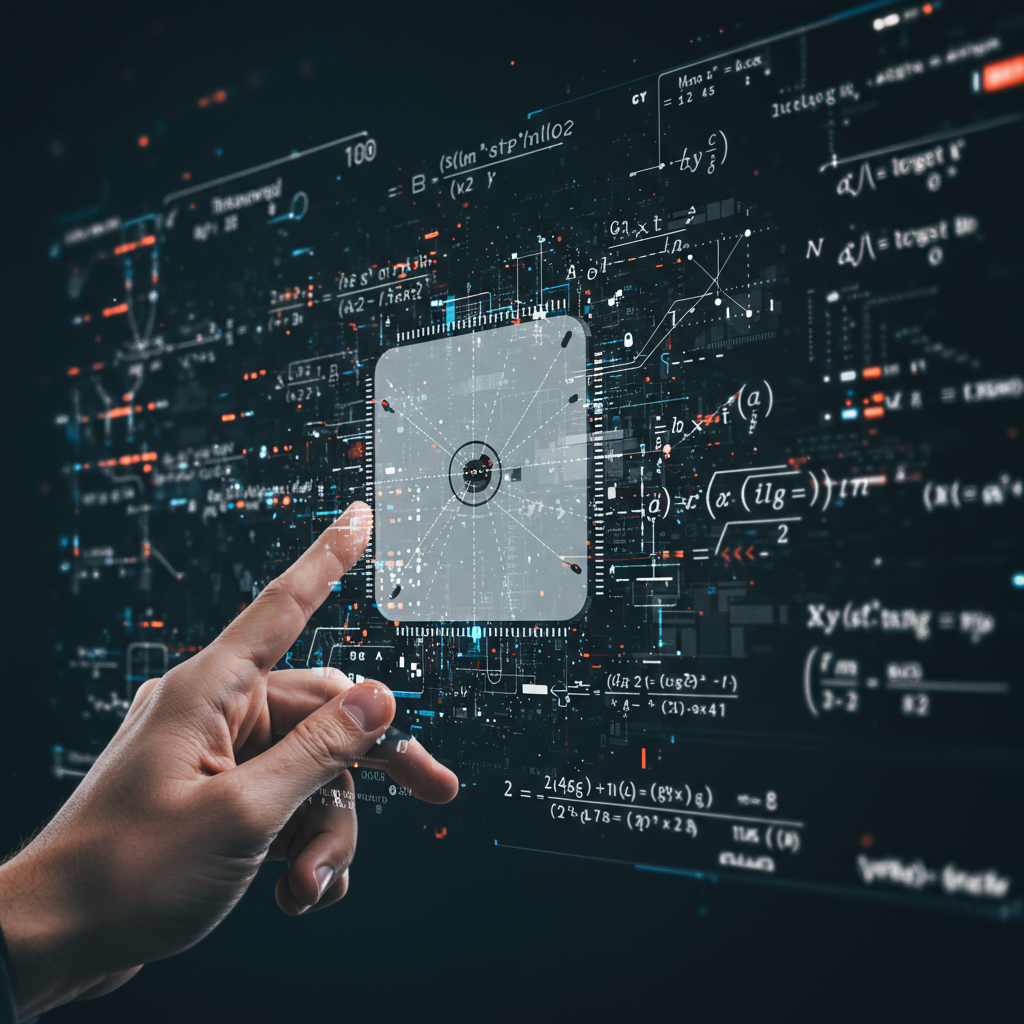Artificial intelligence stands ready to profoundly alter the landscape of mathematical research. For generations, computers have served as vital aids, assisting mathematicians with complex calculations and aiding in the verification of proofs. However, translating the intricate logic of human-written mathematical arguments into a format machines can understand and check has always been an immense challenge. This painstaking process is known as formalization.
Now, a new era is dawning. The latest wave of sophisticated AI models is tackling this arduous task head-on. Their capabilities are showing remarkable leaps forward. This rapid advancement has sparked widespread discussion about the potential for AI to fundamentally reshape how mathematics is discovered, verified, and applied.
The Gathering Storm: AI Takes Center Stage in Mathematics
The increasing power of AI in mathematics was a key theme at a recent significant gathering. Around 100 of the world’s leading mathematicians convened at the University of Cambridge. The primary focus of this conference was the potential for computers to assist in resolving long-standing issues related to checking mathematical proofs for correctness. This is the core of formalization.
Interestingly, this wasn’t the first such meeting at Cambridge. A similar event occurred in 2017. At that time, artificial intelligence was barely mentioned in the context of formalization. Eight years later, the picture is dramatically different. AI has advanced significantly, particularly with the rise of powerful large language models powering tools like ChatGPT. This has brought renewed attention to how AI could impact mathematics. The possibilities range from automatically translating human proofs into computer-readable formal languages to the astonishing prospect of AI systems constructing proofs themselves.
Jeremy Avigad, a mathematician at Carnegie Mellon University in Pennsylvania, helped organize the Cambridge meeting. He expressed a sense of amazement at the shift. “It’s a little bit overwhelming,” Avigad noted. He described his work in this area as previously occupying a “fringe, niche thing.” Suddenly, he finds himself at the center of widespread interest.
Demonstrating Potential: AlphaProof and Trinity
Concrete examples of AI’s growing prowess in mathematics were presented at the Cambridge conference. Google DeepMind, a leader in AI research, showcased its AI system called AlphaProof. Last year, AlphaProof garnered significant attention. It achieved a silver medal score at the International Mathematical Olympiad (IMO). The IMO is a highly competitive event for young mathematicians. It has long been a benchmark target for AI systems aiming to prove mathematical capabilities.
Thomas Hubert, a research engineer at DeepMind, shared insights into AlphaProof’s performance. He noted that reactions among mathematicians to the IMO results varied. “If you talk to mathematicians and ask them about the [AlphaProof] IMO results, you would have had different reactions,” Hubert said. “I think most would say that these are pretty hard high school problems, but maybe some other mathematicians would call them trivial.”
DeepMind demonstrated that AlphaProof could go beyond competition problems. It aided in formalizing a small segment of the prime number theorem. This is an important result in number theory. The mathematical argument had already been converted into Lean, a programming language popular for formal verification. AlphaProof successfully proved this theorem segment and then checked its correctness within the Lean framework. Hubert aimed to show how AlphaProof could be applied in a real-world mathematical context.
Another innovative tool was presented by Morph Labs, a US-based AI startup. Their system, named Trinity, is designed to automate the translation of mathematical proofs entirely. Trinity starts with handwritten mathematical notation. It then generates a fully formalized and verified proof in Lean.
Bhavik Mehta, a mathematician at Imperial College London who has consulted with Morph Labs, demonstrated Trinity’s capabilities. He showed an example of Trinity formalizing a theorem. This theorem was related to the ABC conjecture. This conjecture is famously complex. It remains the subject of intense debate regarding its truth. Formalization could potentially help settle such debates.
While the proof demonstrated was only a small piece of the larger argument needed for the ABC conjecture, and Trinity required a slightly more detailed version of the handwritten input than the original paper, the results were surprising to many attendees. Kevin Buzzard, also at Imperial College London, highlighted the novelty of Morph Labs’ approach. He explained they took an entire, albeit short (four-page, from 1962), maths paper. A human broke the argument into small steps. Then, a machine translated the entire thing into Lean. “I’m not sure we’ve seen anything like that before,” Buzzard stated.
Optimism Meets Skepticism: The Future of Math Research
Despite the impressive demonstrations, questions remain about how widely applicable these tools will be across different areas of mathematics. Bhavik Mehta acknowledged this uncertainty. “This was essentially the first attempt, and the first attempt worked,” he said, adding cautiously, “maybe it got lucky.”
Christian Szegedy at Morph Labs is more optimistic. He believes the tool will advance rapidly once fully operational. Szegedy envisions a feedback loop being established. This would reduce the need for manual intervention. “Then it becomes basically a chain reaction,” he claimed. This process could potentially allow for the formalization of “all of mathematics at once.”
Prominent mathematicians like Timothy Gowers at the University of Cambridge see these tools as potentially incredibly helpful right now. He believes it will take effort to build them out. However, he notes many people are keen to do just that. Gowers predicts significant changes in mathematics within the “next few,” meaning one to five, years. These changes, he suggests, could rival the impact of previous technological shifts in mathematical practice. He compared the potential impact to that brought about by email, LaTeX (the standardized mathematical notation system), arXiv (the online paper repository), and Google Search.
However, this optimistic view is not universally shared. Rodrigo Ochigame at Leiden University in the Netherlands raised concerns about the Morph Labs presentation. He cautioned that crucial details were missing. Ochigame pointed out they showed only a single output. This result could have been cherry-picked. No paper or basic method information was shared. They also declined to disclose the computational resources used. This makes it difficult to assess the true significance of the result, according to Ochigame.
Skepticism also persists regarding the overall usefulness and adoption of AI tools. Most mathematicians currently work without them. It’s unclear if this will change significantly, even as the tools improve. Minhyong Kim at the International Centre for Mathematical Sciences in the UK highlighted the diverse nature of the mathematical community. “Mathematics and mathematicians are incredibly diverse in their inclinations,” Kim observed. He expects some will effectively use AI tools. Others, he believes, will prefer to maintain distance.
Ochigame further argued that people underestimate the complexity, creativity, and subtlety inherent in mathematical research. This is why so much cutting-edge work still relies on traditional methods like pen, paper, and deep thought. He emphasized the vast difference between problems found in high school competitions like the IMO and the challenges of cutting-edge research.
The integration of AI into mathematics research is clearly an evolving story. While tools like AlphaProof and Trinity showcase exciting possibilities for automating and verifying complex arguments, challenges around transparency, generalizability, and the diverse preferences of mathematicians remain. The coming years will reveal just how deeply artificial intelligence will reshape the ancient practice of mathematics.
Frequently Asked Questions
What exactly is proof formalization in mathematics?
Proof formalization is the process of translating a mathematical proof, typically written by humans in natural language and mathematical notation, into a precise, machine-readable language. This allows computer programs, known as proof checkers or theorem provers, to automatically verify the logical correctness of the proof steps. The original article highlights that this translation process has traditionally been very difficult and time-consuming.
Which specific AI tools are being developed to help mathematicians?
The article mentions two notable AI tools demonstrated recently. Google DeepMind presented AlphaProof, an AI system that achieved success in the International Mathematical Olympiad and aided in formalizing a part of the prime number theorem in the Lean programming language. Morph Labs showcased Trinity, an AI tool designed to automatically translate mathematical proofs from handwritten notation directly into fully formalized and checked code, also using Lean.
Will all mathematicians start using AI tools soon?
Based on the perspectives shared in the article, it’s unlikely that all mathematicians will immediately adopt AI tools. While some experts predict significant changes within the next few years, other mathematicians express skepticism. Concerns include the transparency of current tools, the large gap between problems solvable by current AI and cutting-edge research, and the inherent diversity in how mathematicians prefer to work. Some will likely integrate AI effectively, while others may continue to rely on traditional methods.




